For our Style & Design 2020 awards, we highlighted the best-designed products that solve problems with game-changing advances and solutions so elegant they have a style all their own. These 24 items will improve your performance everywhere from the mountains to the kitchen—and look great doing it.
Contributors: Jesse Will, Berne Broudy, Ryan Krogh, Tom Samiljan, Adam Bible, Clint Carter, Andy Cochrane, Ryan Stuart, Brittany Smith, and Jon Perino.
Style & Design 2020: Sleek New Cars, Gear, and Gadgets
The Bronco’s Mighty Comeback
Upon its launch in 1966, the Ford Bronco—then called an “All-Purpose Vehicle”—promised an affordable way to head into the Great American Wilderness, pavement be damned. And it delivered, until its demise 30 years later (two years after that famed O.J. chase). In the two decades since, sure, there have been other vehicles on the market tough enough for use on the trail, but we’d argue that none of them exude the off-duty cool of the boxy Bronco. Luckily, this American classic is coming back, and that rugged old-school style (flat body panels, fenders over the wheels, an encapsulated grill) is paired with all-new technologies you’d expect in much spendier luxury off-roaders. And in a Bronco first, the vehicle will be offered with four doors (though you can still opt for the classic two). Despite the nods to modern convenience, this is still a vehicle built with the original’s sense of four-wheel fun in mind. Bronco U.S. Consumer Marketing Manager Mark Grueber says that designers spent plenty of time perfecting its top-down, doors- off features, such as ensuring that crossbars wouldn’t spoil the overhead view from the back seats. “The second-row view is just as good, if not better, than the first,” says Grueber. “It’s like a roller coaster.” With everyone looking to get back into the wild this fall, the new Bronco is a thrill ride that arrives right on time.
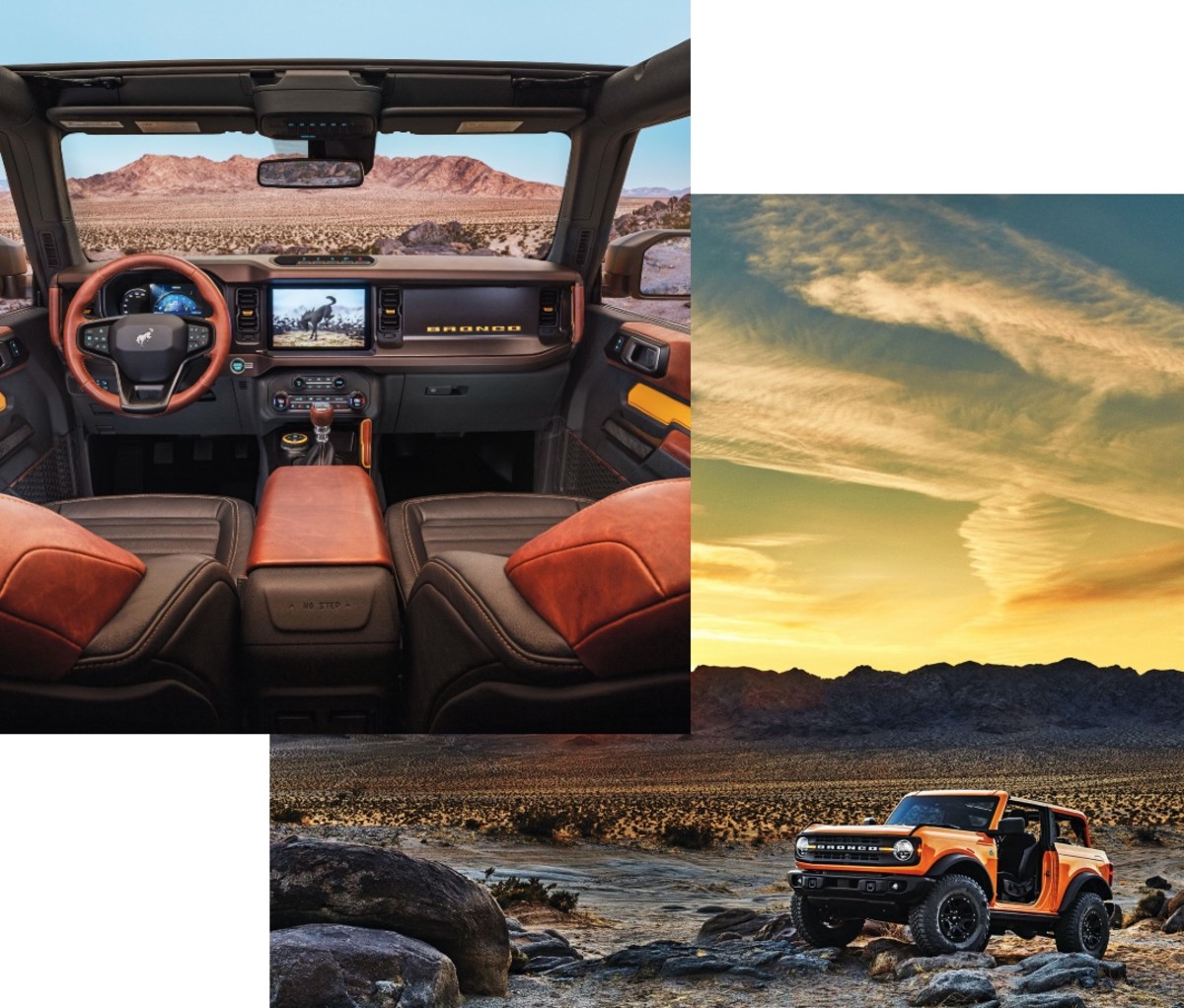
Off-Grid & Online
The Bronco boasts an array of cool digital assists for going off-road. Trail maps with a breadcrumb feature will display on the 12-inch touchscreen; 360-degree cameras help plot wheel position in tricky segments, and a one-pedal driving scenario—similar to EV systems where easing the gas pedal can also serve as the brake—make slow-speed trail crawling much less harrowing.
Raise the Roof (and the Doors With It)
The designers wanted the top and doors to come off easier than those on the Jeep Wrangler, which can require two people (and some time). The frameless front and rear doors and roof panels come off within minutes, and store onboard. Side-view mirrors are mounted to the vehicle’s cowls, and still functional when the doors are off.

Weather Ready
Toggle hero switches, which can control an array of off-road hardware (such as lockers and sway bar disconnects), are mounted atop the instrument panel, an easy reach away. They’re weatherproofed with silicone—similar to the marine-grade seating, which can get wet without damage when you’re faced with an impromptu shower.
Brute Force
The Bronco offers plenty of burly powertrain features—buyers will choose either a 2.7-liter six-cylinder or a 2.3-liter Eco-Boost four-cylinder engine, along with a 10-speed automatic or a seven-speed manual. Based on a similar platform to the Ford Ranger, 4×4 drive is standard. There’s an available 94.75 crawl ratio, which bests the Wrangler, and should give the Bronco what it needs to conquer sketchy hard-rock ascents.
[From $28,500; ford.com]
Get it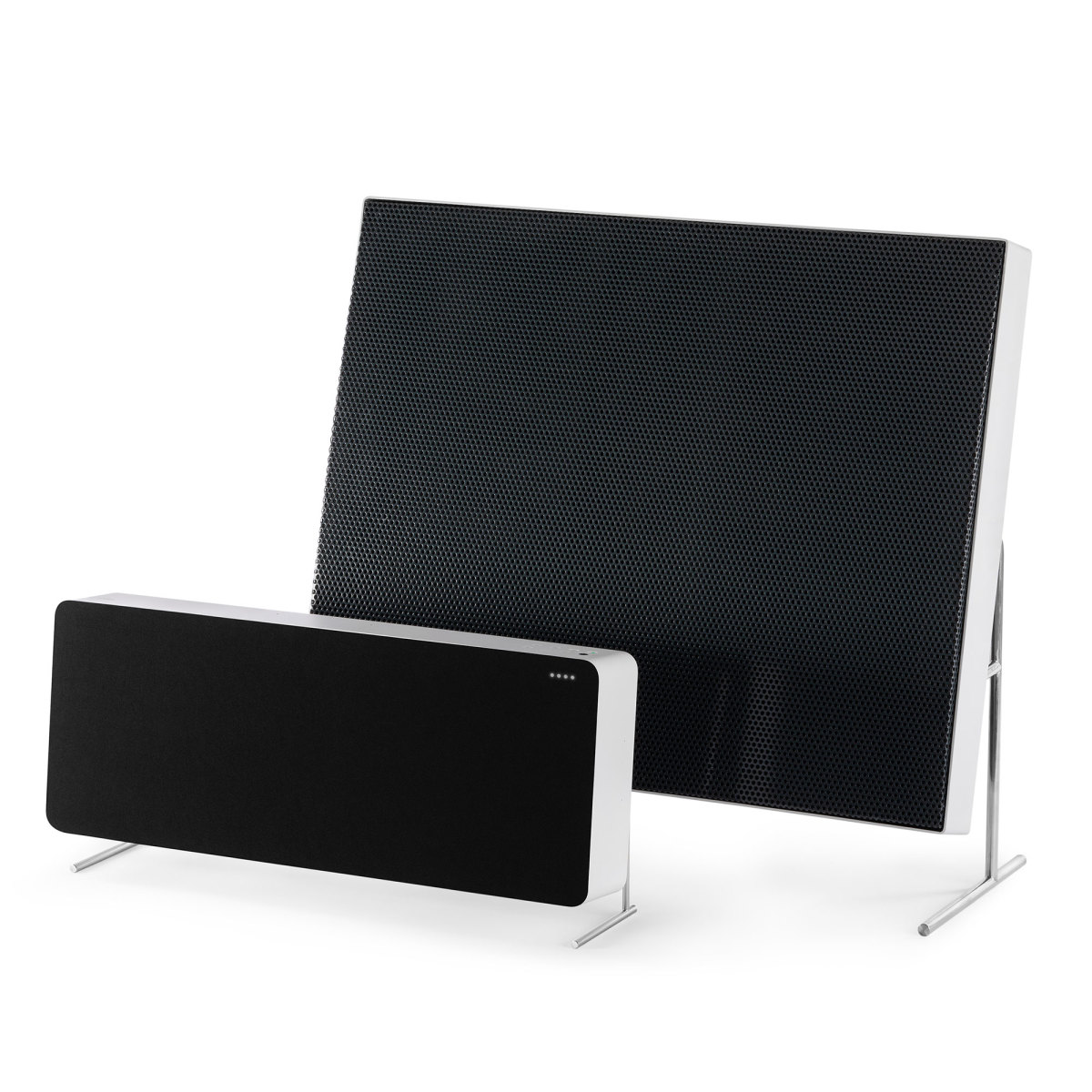
Standard-Setting Sound
When it came out in 1959, the Braun LE1 was the world’s first electrostatic, flat-panel speaker. Updated for the smartphone era, the LE01 (pictured in front of the original) retains the signature metallic feet to prop the speaker up at an angle, but also adds a rounded aluminum body that’s flush with the speaker grille, a simple set of round control buttons on top, and built-in Google Assistant voice recognition capability. It epitomizes the utilitarian “less is more” aesthetic of the original speaker’s legendary designer, Dieter Rams.
[$1,299; braun-audio.com]
Get it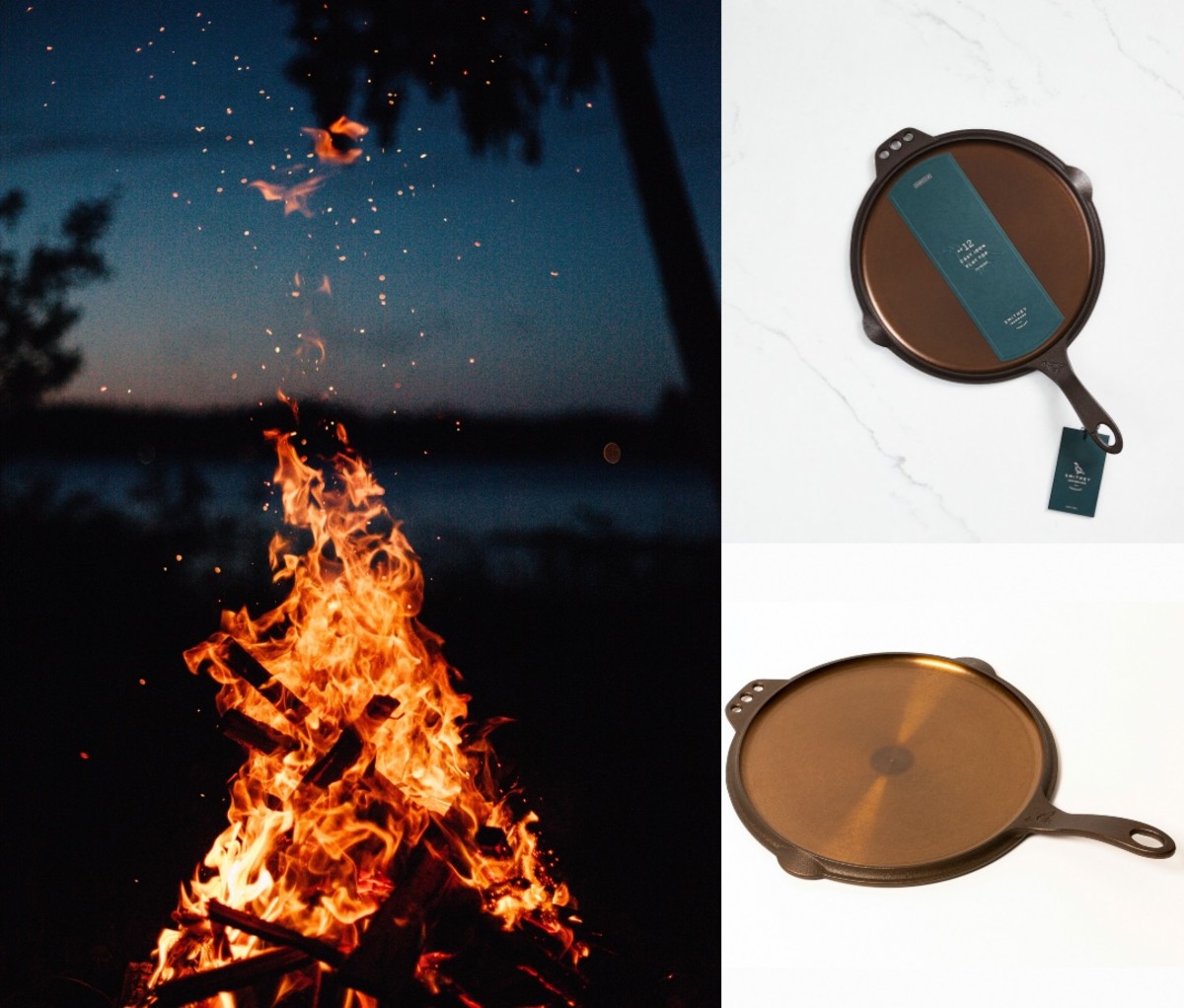
Forever Ware
For Smithey Ironware founder Isaac Morton, what started years ago as a love affair with refurbishing rusty old pans has morphed into the world’s most stylish line of cookware for home chefs. His latest offering is a 12-inch griddle as comfortable in a 500-degree oven cranking out pizzas as it is over a campfire frying bacon. The 7-pound No. 12 Flat Top Griddle is engineered to disperse heat evenly, and the polished and pre-seasoned finish—done by hand in a workshop outside Charleston, SC—is better than just about any chemical-heavy nonstick coating. The cast-iron griddle is designed to serve as a lid for Smithey’s No. 12 skillet, and both will be as modish 50 years from now as they are today, when they don’t just look the part but are heirlooms in their own right.
[$125; smithey.com]
Get it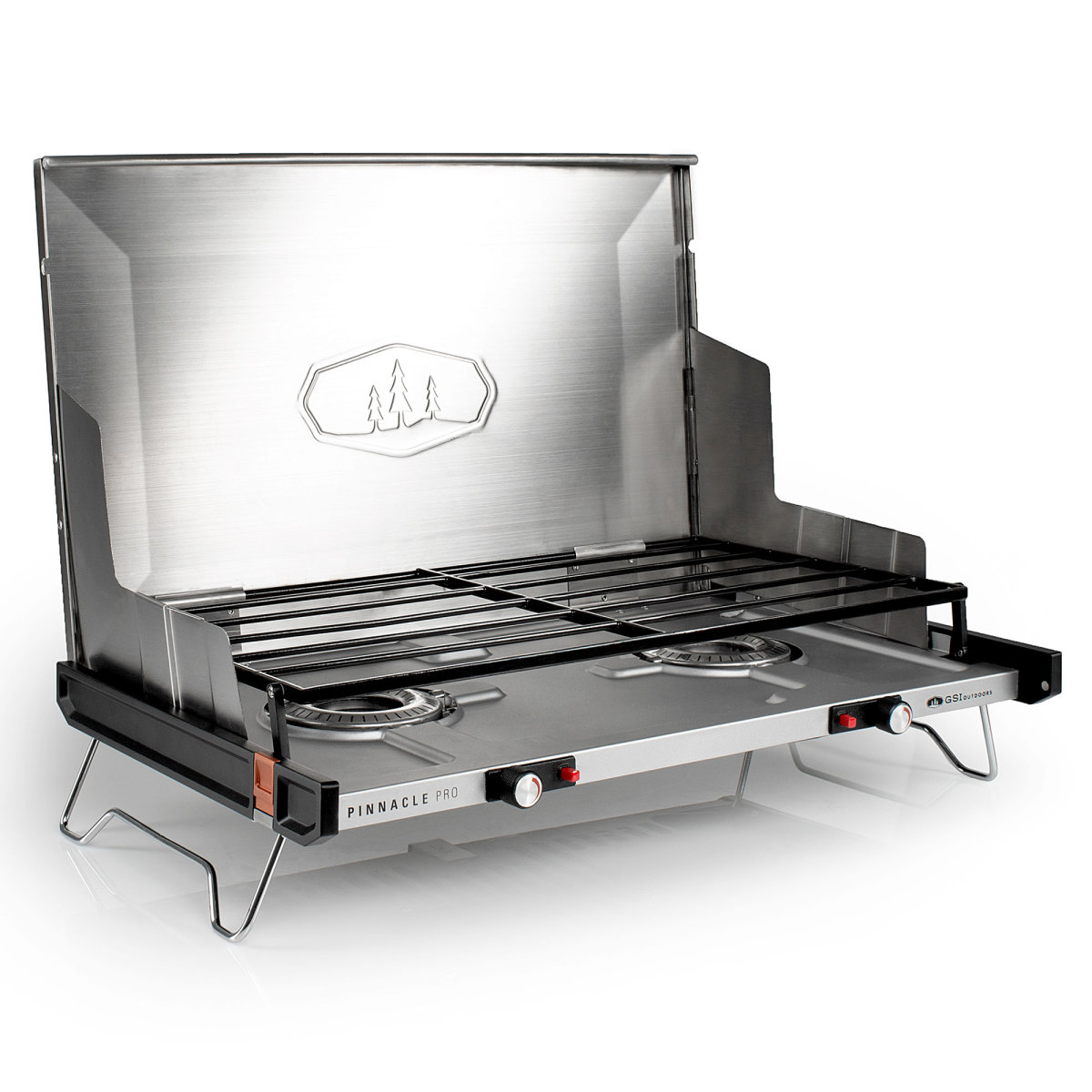
A Better Two-Burner
Challenged to design a camp stove as thin as a MacBook Air, the team at GSI created this sleek successor to the Coleman classic. Pop open the Pinnacle Pro’s lid and a unique linkage expands the pot support up to cooking height. A pair of 11,000-Btu, lollipop-shaped burners suck secondary air using the Venturi effect to cook high and simmer low. Don’t worry, you can still put those green 1-pound propane cylinders (or a standard LPG tank) to use with push-button ease.
[$199; gsioutdoors.com]
Get it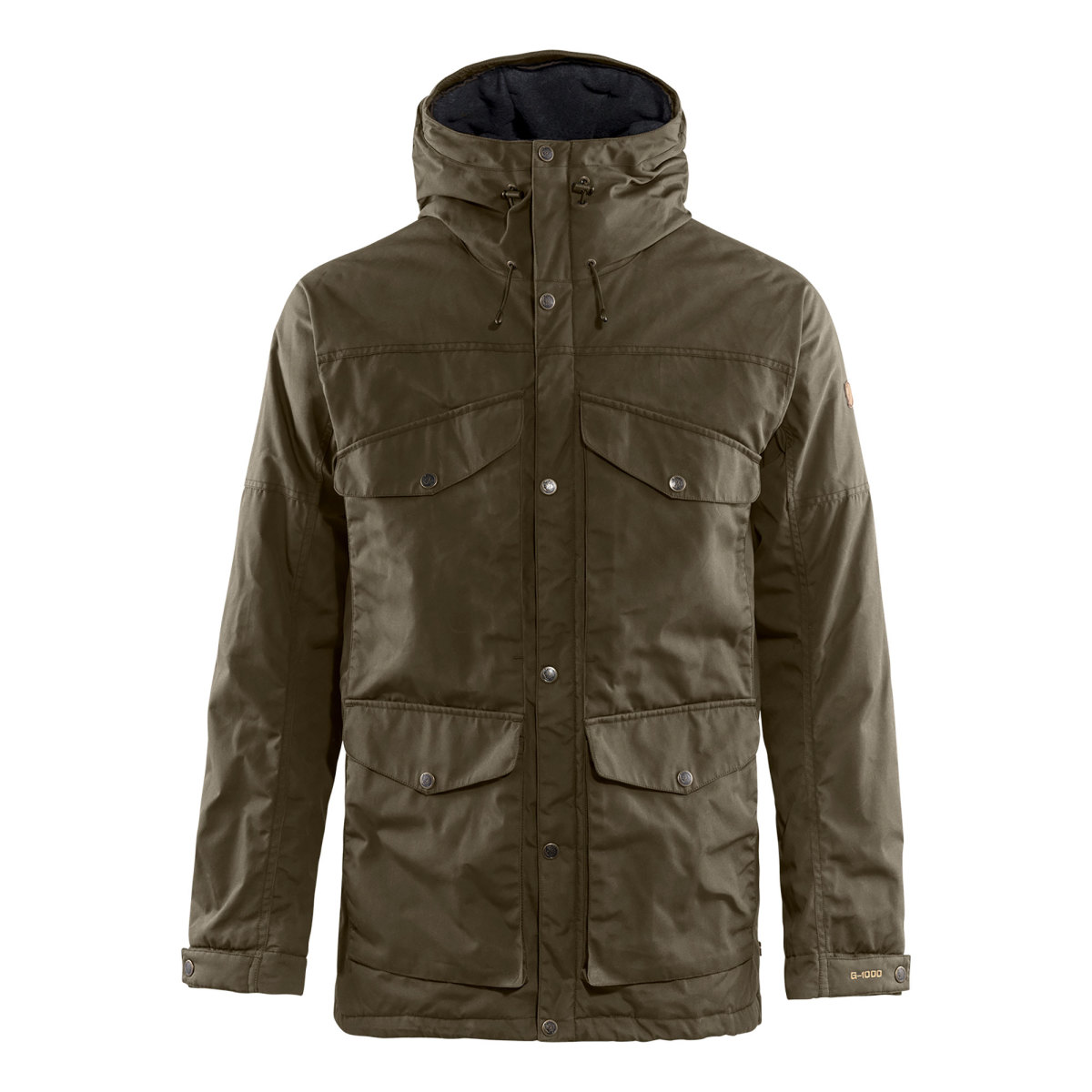
Well Coated
Upgrade your played-out puffy with this timeless parka from Fjällräven. The sharp and clean eight-pocket Vidda Pro Wool Padded Jacket is clad in the Swedish crafters’ legendary long-lasting G-1000 Eco waxable fabric, and insulated with recovered Gotland Island sheep wool. Destined for the trash, this difficult-to-spin (but super warm) wool is blended with biodegradable cornstarch fibers to create an all-natural insulation.
[$400; fjallraven.com]
Get it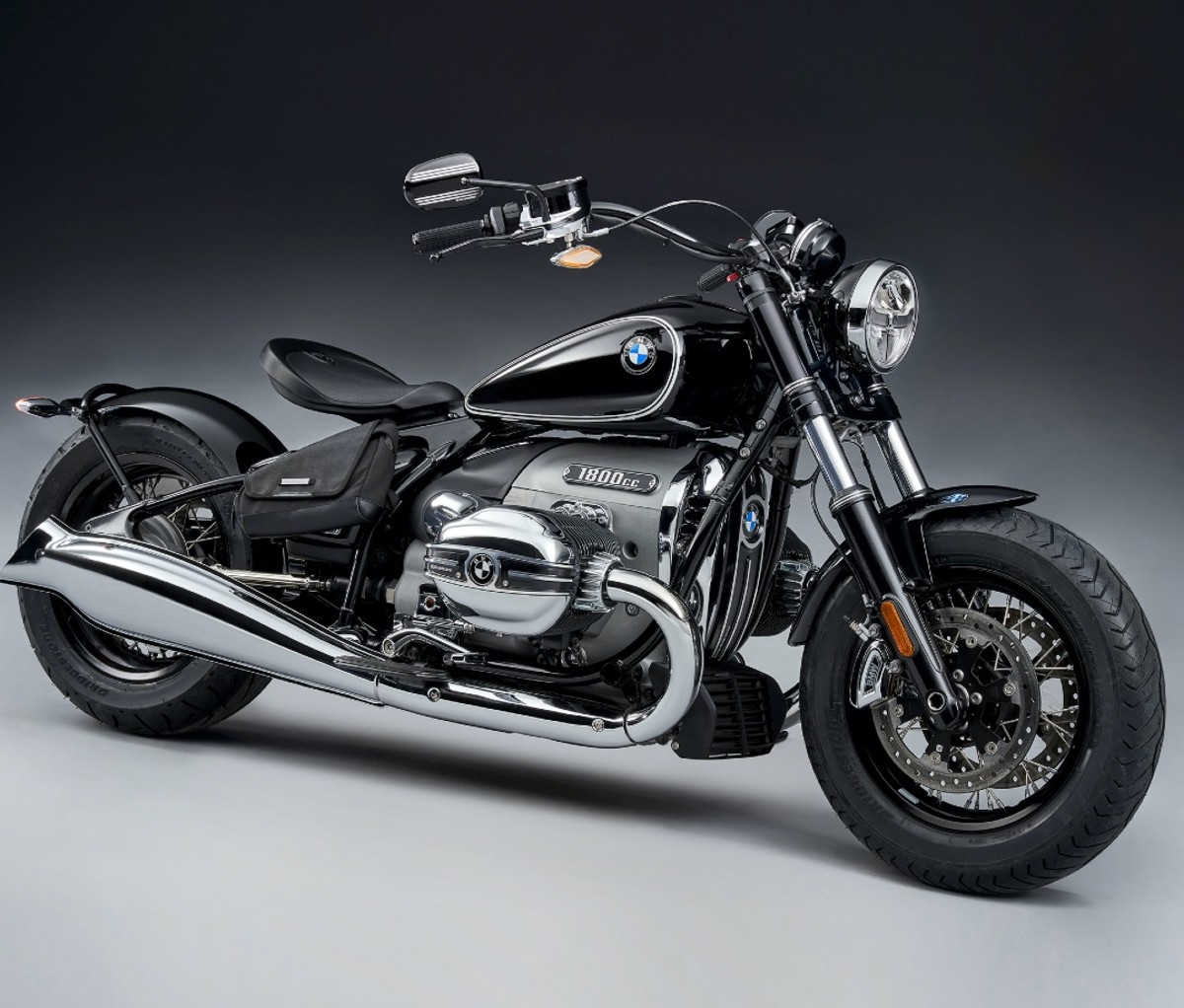
The Great American Kreuzer
Tradition trumps speed in the cruiser bike category, so it’s no surprise that innovation tends to move at a leisurely pace. But with the BMW R 18, the pace picks up. The German manufacturer’s first heavyweight cruiser is built to do battle with both Harley and the Japanese big four, and the relaxed seating position lends it a quintessentially American look. The R 18’s underpinnings, however, are unmistakably Teutonic, with design and functional elements—like its droptank and open-running driveshaft—pulled from the brand’s iconic R5 model from the 1930s. “We took a look at it and found so many beautiful elements,” says BMW Project Co-Leader Roland Stocker. “We did our homework.”
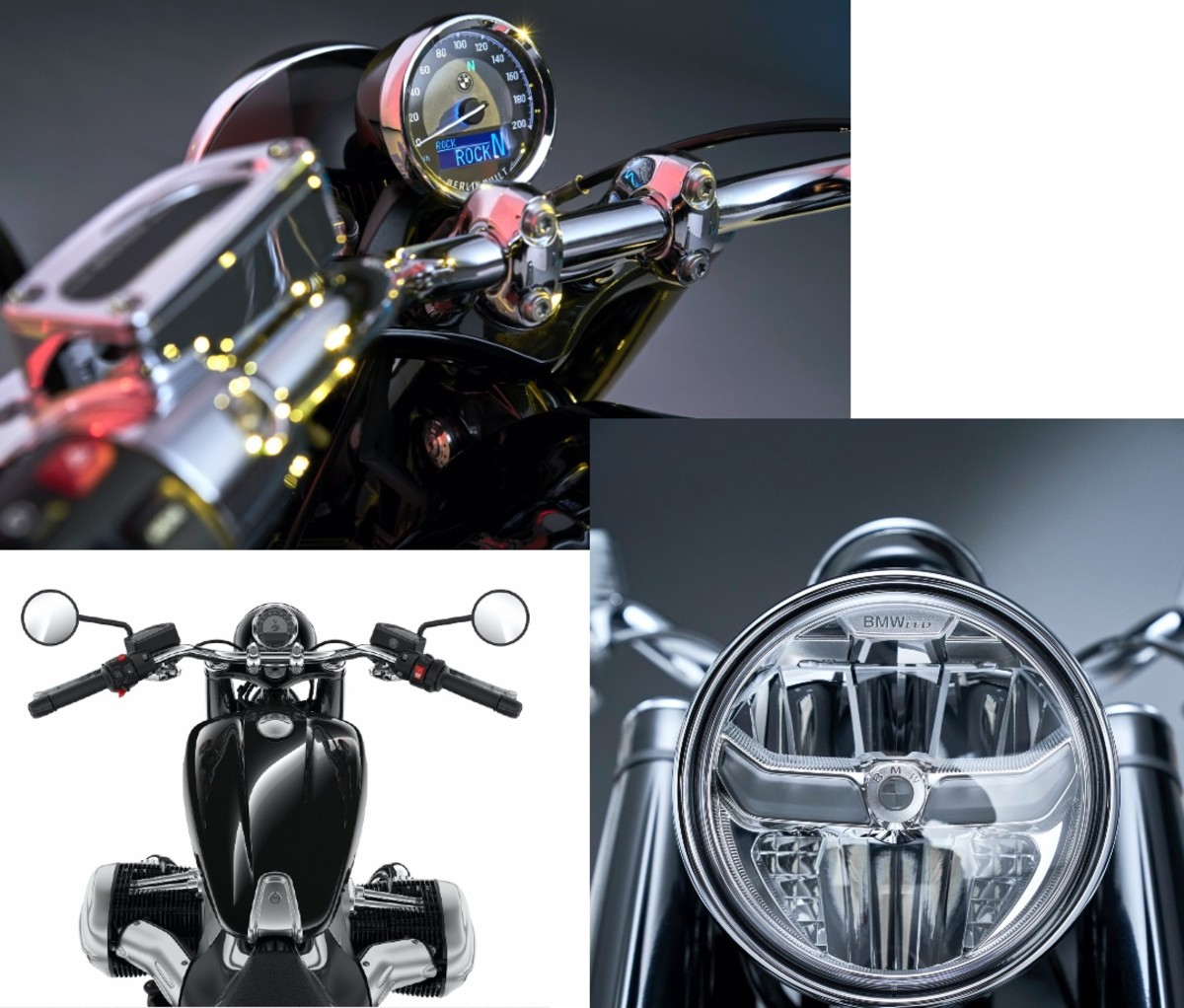
The R 18’s two-cylinder, 1802-cc engine is the largest-ever boxer engine put in a production bike; all of its walloping 116 foot-pounds of torque are available at a low 3,000 rpm. Similarly, tech features like keyless ride and three active drive modes (rain, roll, and rock) put other cruisers in the rearview. It’s a bike with the best of both old and new.
[From $17,500; bmwmotorcycles.com]
Get it
The Stealth Commuter
It took a small army of designers and engineers to build Specialized’s 33-pound, long-range Turbo Vado SL e-bike. A 320 Wh battery, plus a lightweight motor and fittings, created a ride you can actually lift, which still assists up to 28 mph. “You don’t need a big engine to get to top speed,” says Senior Product Manager Marco Sonderegger. “And, just because you have a big gas tank doesn’t mean you have big range. If the original 50-pound Turbo Vado was an F350, this one is a Prius.”
If the original 50-pound Turbo Vado was an F350, this one is a Prius.
The battery is hidden in the frame, and the bike’s so light you forget it’s electric—until you need a boost. The sleek setup comes with lights and a computer mount, as well as options for rack, fenders, and a water bottle-size range extender that adds 40 miles. “When you drink a good wine, it’s all about the blend,” Sonderegger says. “It’s the same here, but the perfect blend is power, weight, and range.”
[From $3,350; specialized.com]
Get it
Reel Speed
With a large-arbor spool and a carbon-fiber/stainless steel disk drag system that features a wide range of tension levels, the Abel Vaya can handle everything from light saltwater work to trout streams requiring a superlight tippet. Plus, with 80 different finishes, everything from a native cutthroat pattern to retro Caribbean—and eight unique handle colors—the western Colorado crafters bring custom style to unmatched retrieval speed (sizes: 4/5, 5/6, and 7/8).
[$495; abelreels.com]
Get it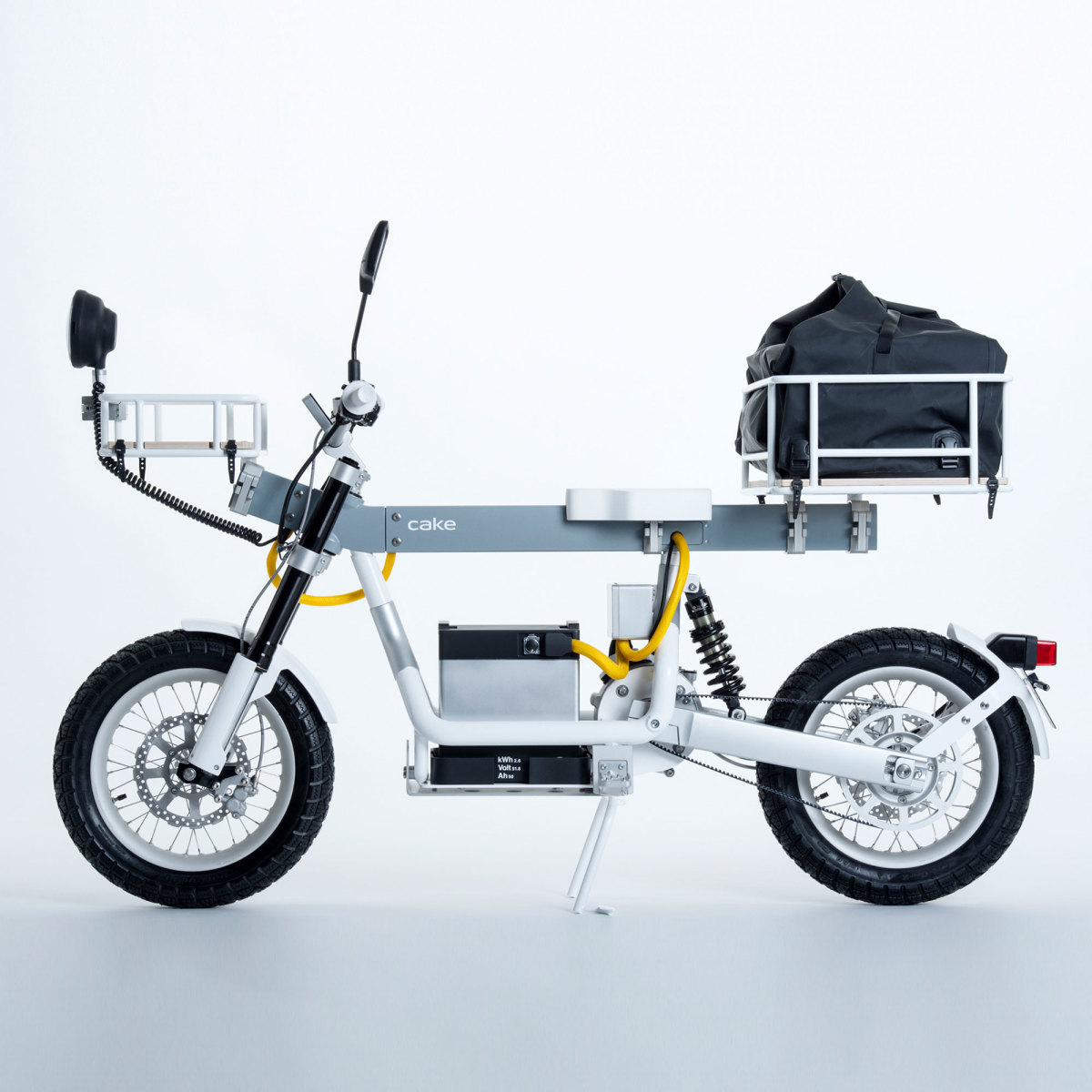
A Two-Wheel Adventuremobile
While some electric motorcycles aim to compete with their internal-combustion forebears, others plot an entirely new future for two-wheel travel, like the utility-loaded Cake Ösa. With no gas tank to nest behind the steering column, Cake is able to run a robust aluminum beam front to back. Using Ösa’s clamps, riders can attach storage baskets, a passenger seat, or racks for surfboards or fishing poles to the beam—no tools required. “There are endless possibilities for accessories,” says Robin Karlsson, Cake’s product development manager, noting there’s more to come. The Ösa tops out at 56 mph(or 30 mph for the Lite version), but with instantaneous torque from the electric motor, it’s still a thrill to ride. The battery charges from dead to full in three hours and, thanks to a selection of charging ports, you can use it to power computers, speakers, and floodlights. Even the guy in the kitted-out Sprinter van at the next campsite might be a little jealous.
[From $6,500; ridecake.com]
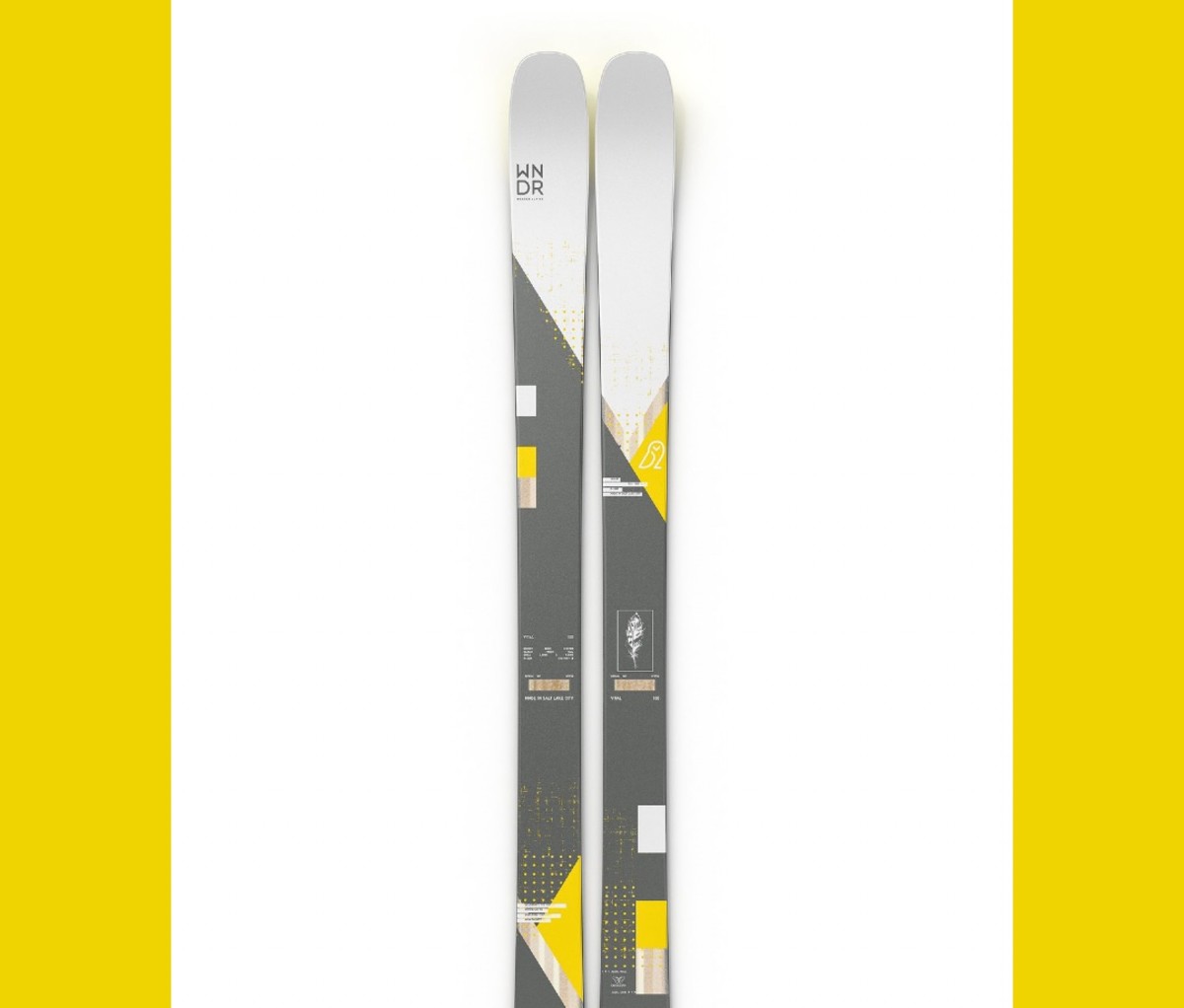
Cellular Device
Here’s the ski industry’s dirty secret: Nearly all boards are made from the same stuff and differences in performance are largely a function of shape. Limited to off-the-shelf materials, manufacturers rely on petroleum-based carbon fiber and other composites developed for different industries, repurposing them for skier needs. WNDR Alpine breaks the mold, recasting two totally new (and renewable) core and side- wall materials that are intentionally designed for backcountry skiing rigors first, down to the chemical level. That’s where life begins for the Vital 100, with the growth of microalgae that produces an oil engineered into a high-density polyurethane and laminated as a stringer between strips of domestically sourced aspen. Using a core stiffener with a cellular construction means the skis absorb impact better than alternatives with wooden or composite fibers. It also cuts weight, yielding a lighter ski with more torsional stiffness. Translation: better edge hold when you need it most. “Situations in the backcountry change quickly,” says Pep Fujas, pro skier and WNDR Alpine’s VP of marketing. “You find yourself up against different terrain features, snow quality, temps, and hazards— the ability to adapt is what separates a capable ski from the rest.” Three weeks of late-season testing convinced us that the bio-based build is no eco-conscious gimmick. The lively, responsive ski punches above its weight class with high-speed stability on variable snowpack, while remaining nimble in steep and technical situations.
[$699; wndr-alpine.com]
Get itNike
Hot Foot
In 2019, when Eliud Kipchoge shattered records with his unofficial marathon time of 1:59:40, he didn’t have rockets strapped to his feet; he wore a prototype of the Nike Air Zoom Alphafly Next%. The racing shoe boasts a snappy, full-length carbon-fiber plate and two Zoom Air pods in the forefoot for added oomph with every stride.
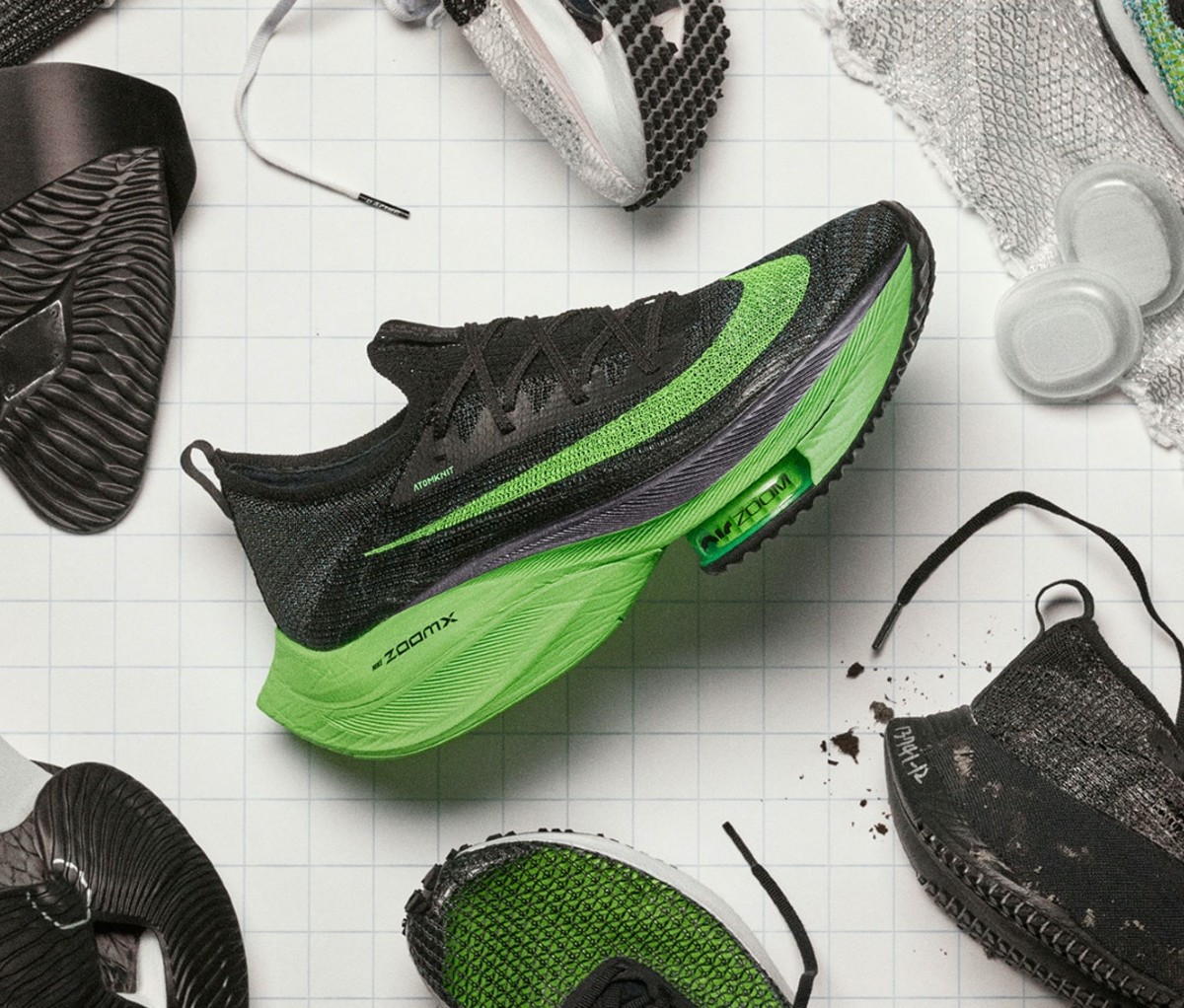
The heel’s ZoomX foam—originally an aerospace innovation—lends lightweight cushioning and an 85 percent energy return, so your legs feel fresh, not trashed, on the tail end of runs. The AtomKnit upper is the next iteration of Nike’s popular Flyknit material. It’s pliant yet supportive, and resistant to sweat and water absorption, staying breathable and dry even when the rest of you is not.
[$250; nike.com]
Get it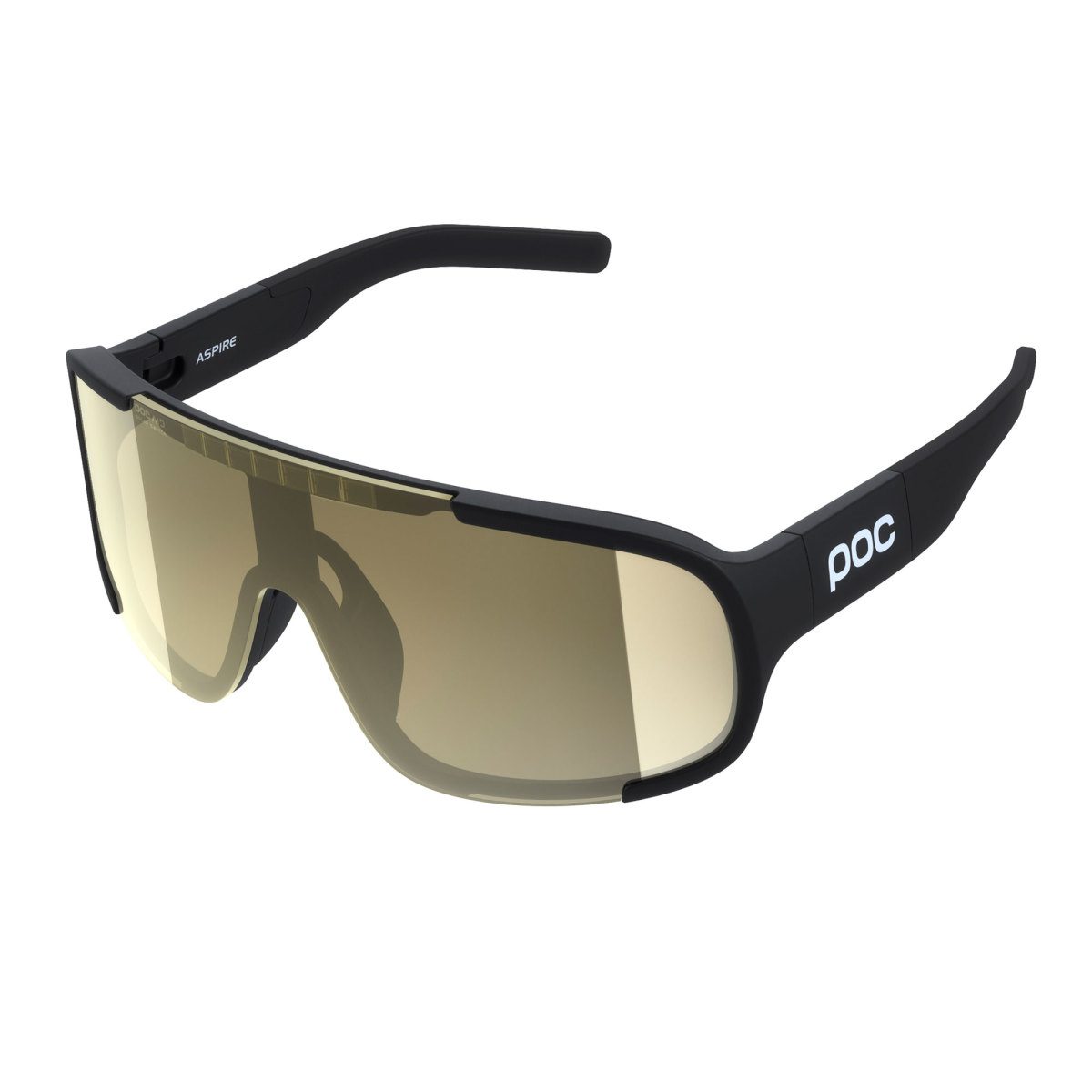
Solar-Powered Sunnies
To fight the blinding power of sudden shifts in light—like when a road cyclist rolls into a tunnel—POC put solar panels in the lens of these Italian-made shades. First, the Aspire Solar Switch detects light intensity and then, with that solar power, electronically adjusts the tint to match. The shift from a light amber/gray to a dark gray tint in sunlight happens continuously and without input from the rider.
[$450; pocsports.com]
Get it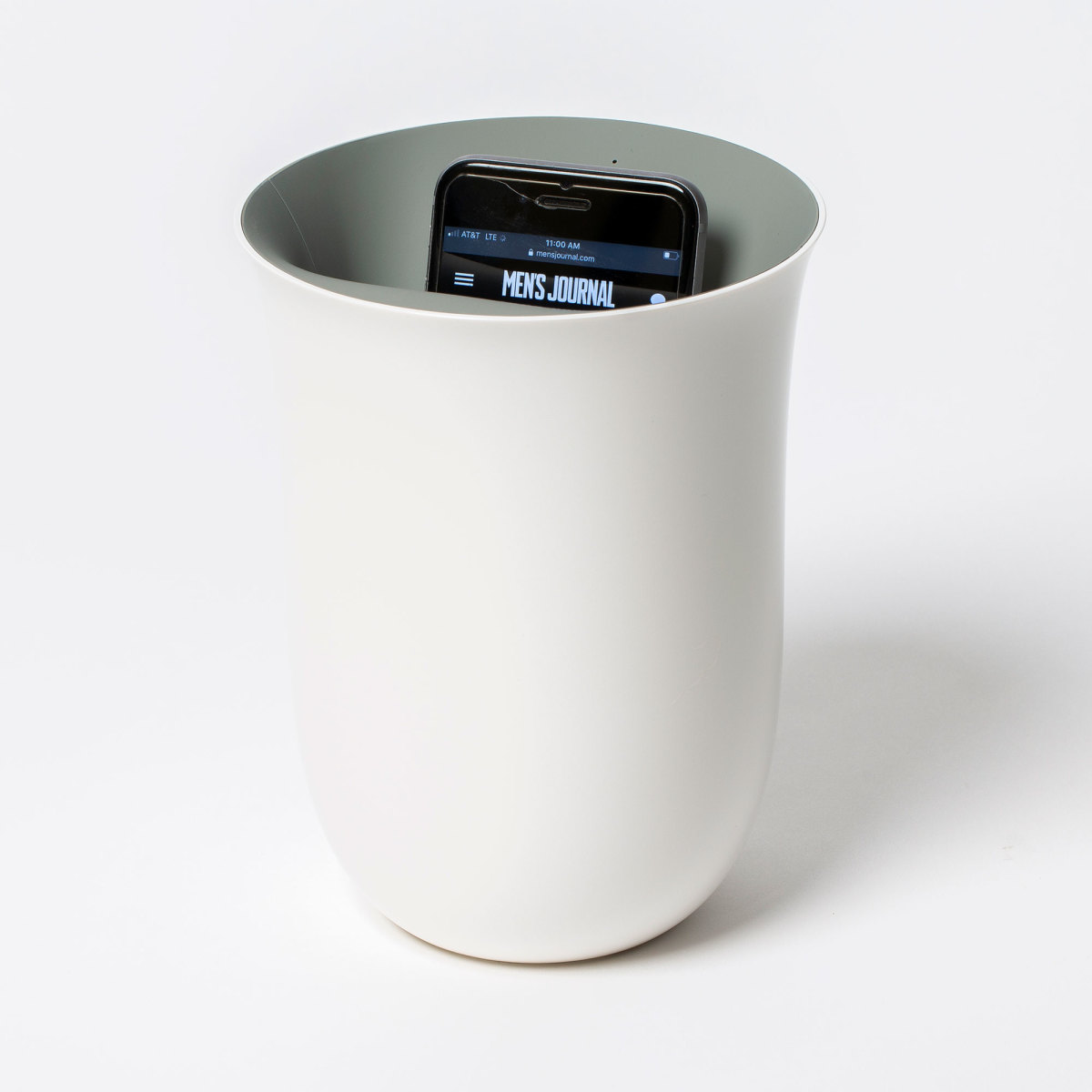
Phone Home
Though it looks like a curvy, minimalist vase—especially if placed among other tabletop objets d’art—the Oblio’s high-minded European design discreetly addresses two hassles of the digital era: charging and disinfection. Slipping your phone into the receptacle hides it from view, then activates a UV LED sanitizer that eliminates 99.97 percent of bacterial germs within 20 minutes. All the while, a wireless charger juices your phone to full power within three hours. Say goodbye to the scourge of sanitizing wipes and unsightly desktop power sources.
[$80; lexon-design.com]
Get it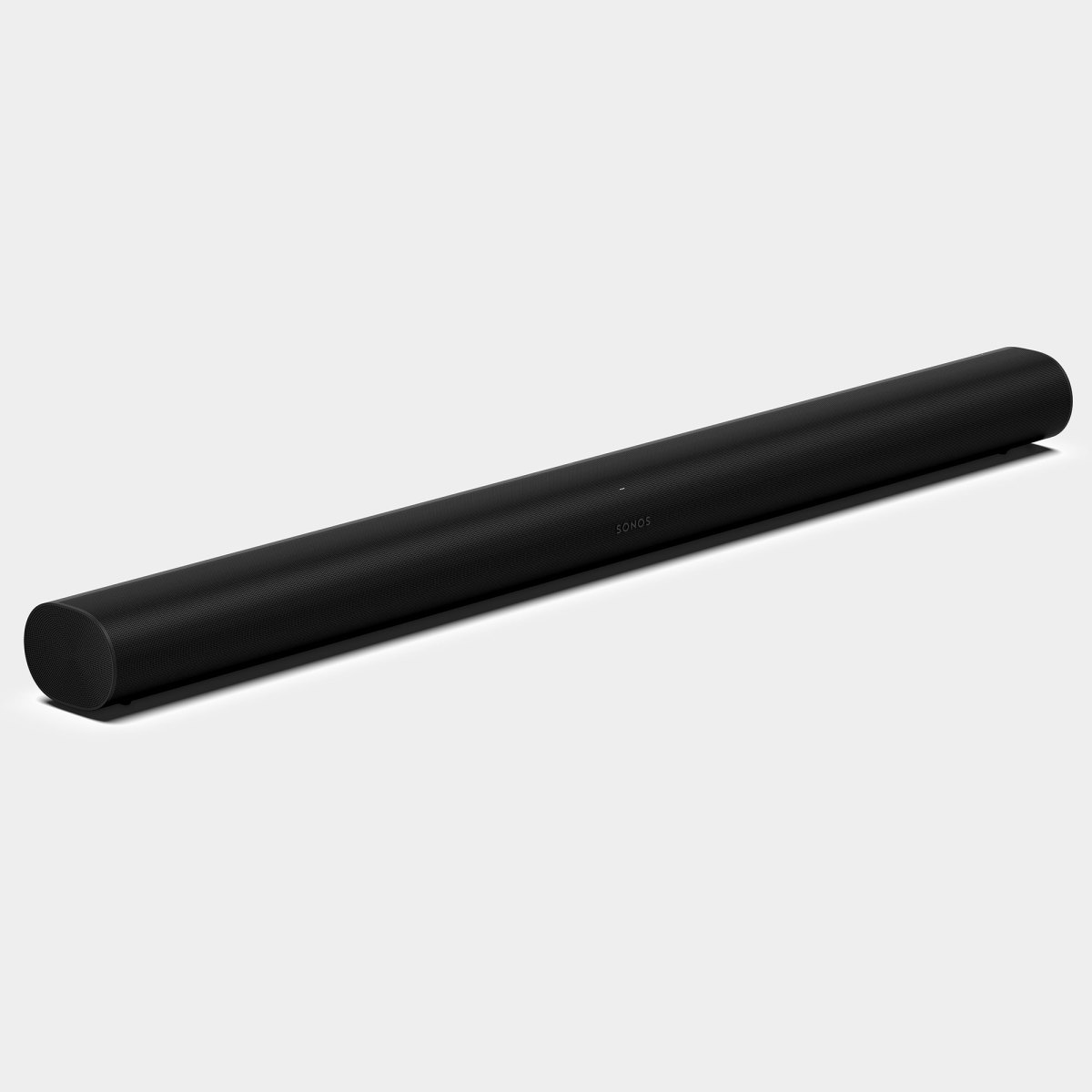
The Theater-Worthy Soundbar
The folks at Sonos made their name with wireless speakers that overdeliver on sound, relative to their size, and the brand’s most recent effort might be its best yet: The Arc soundbar conjures up big movie-theater-like envelopment (via Dolby Atmos) from a compact cylinder. Intended for TVs sized 49 inches and above, the Arc’s svelte body hides 11 drivers, including eight woofers and three tweeters, all set at an upward angle that, when combined with the wide open 270-degree grille, bounces sound off the ceiling, adding height for a 3-D effect.
[$799; sonos.com]
Get it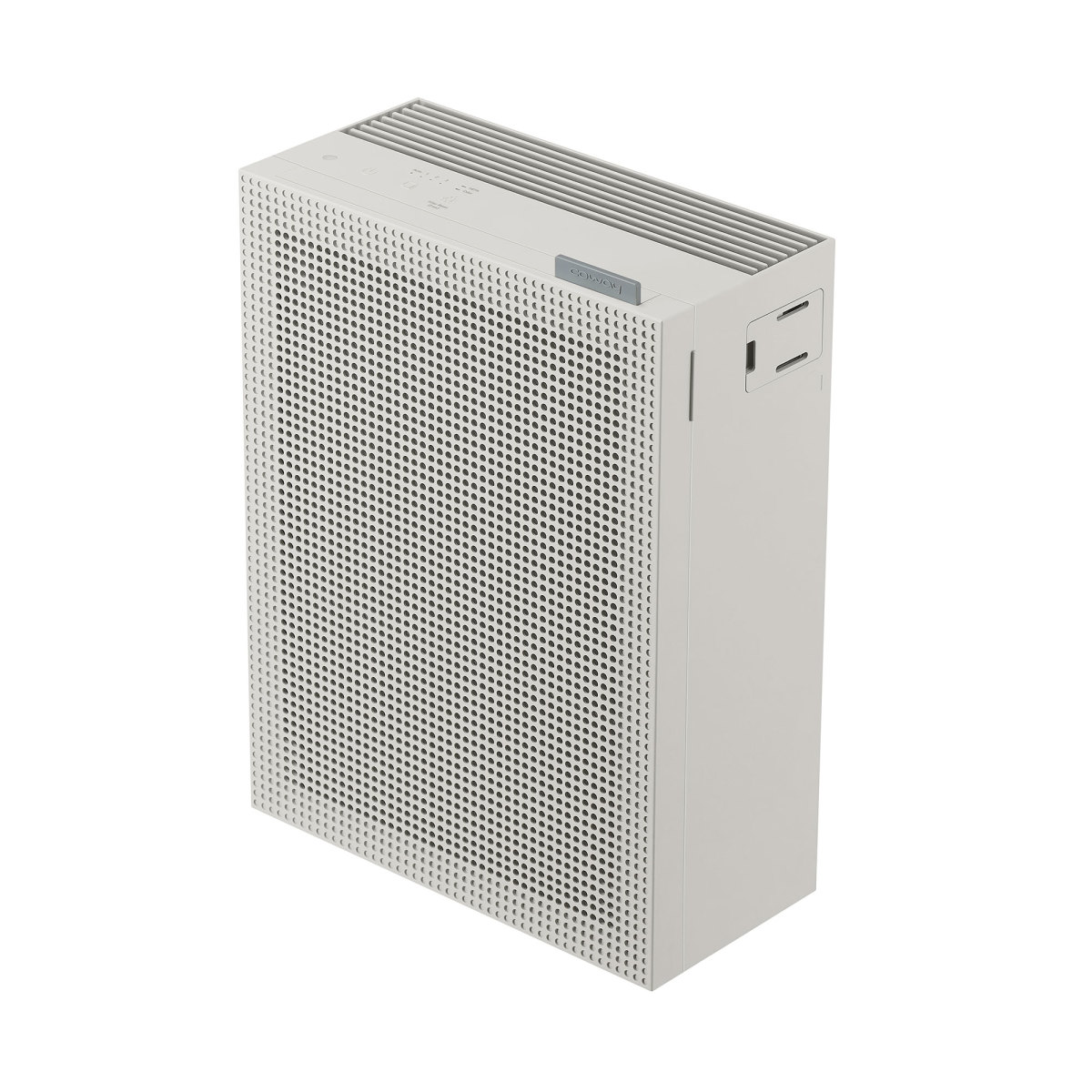
The Domestic Decontaminator
Thanks to pollution and pandemics, air purifiers have become home fixtures that often require a choice between power or style—and deep pockets either way. The new Coway Airmega 150 finds the perfect middle path, combining a sleek look, user-friendly functionality, and essential filtration features that get the job done, all for a fraction of the price of higher-profile competitors. Not much bigger than a shoebox, the 150 easily moves from room to room. With a staggered-hole perforated grille, it evokes a midcentury radio or speaker—at home anywhere, from tabletop to shelf to floor. Its three filters—pre (dust and dander), deodorizing (odors and harmful gases), and HEPA (pollen and allergen particles as small as 0.3 microns)—are almost flush with the unit’s overall frame. Simple top controls toggle between three fan speeds, which can also be set to auto-adjust based on the air quality sensor. “We skipped functions such as timers and WiFi, used smaller parts, and excluded all decorative elements unrelated to ease of use,” says Coway Chief Design Officer Hyun Joo Song of the strategy to keep the device small, clean, and functional. Even so, the 150 has some unique features, including a removable, washable pre-filter. Who knew peak minimalism would be achieved by an air purifier?
[$190; cowaymega.com]
Get it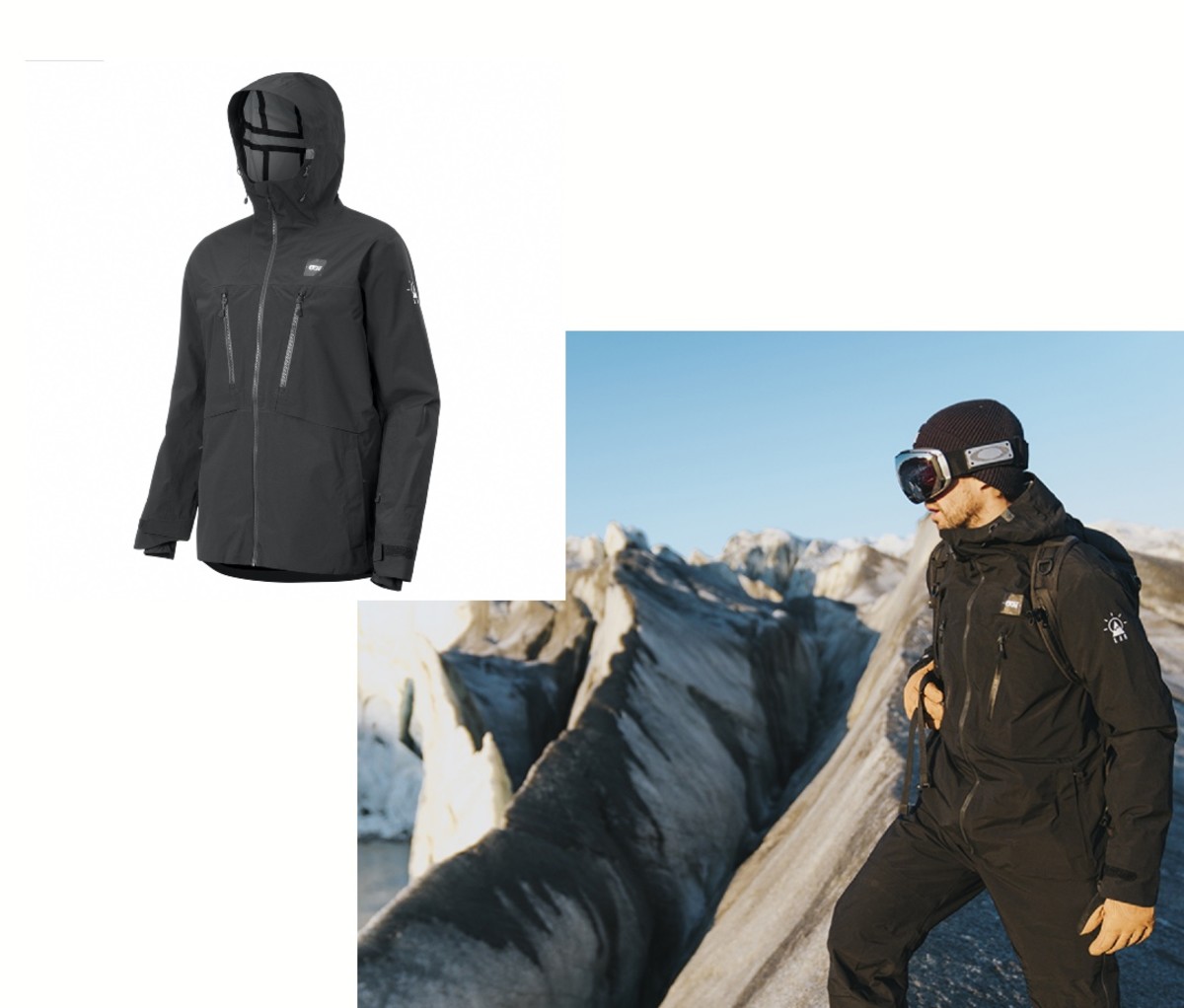
The Evolved Eco-Shell
Demain translates to tomorrow in French, but the new expedition-worthy shell of the same name from Picture Organic Clothing was originally dreamt up when the company was founded in 2008. The problem, says co-founder Julien Durant, was that “from the beginning, our company’s rule was if we can’t make it sustainably, then we’re not going to make it.” For years, Gore-Tex Pro was the only material that offered the self-proclaimed perfectionists suitable performance, but Gore’s use of chemical solvents and other perfluorochemicals to create its waterproof-breathable membrane was a problem for Durant. These so-called “forever chemicals” can bioaccumulate as permanent contaminants—a deal breaker based on Picture’s Golden Rule. But then Durant met with BenQ, the leading maker of membranes for lithium-ion batteries, and learned about Xpore. Using a stretching process, BenQ creates nanopores in membranes that convey breathability on the waterproof Xpore, making it comparable to Gore-Tex Pro without the use of solvents or PFCs. An added bonus? It’s half the weight. In the field, the three-layer shell performs just as well as equivalent Gore-Tex Pro shells we’ve tested. To up its earth-friendly bonafides, Picture sandwiches that membrane in a polyester made from a split of sugarcane waste fibers and other recycled materials. This protects it from both body oil and exterior dirt and wear—as well or better than the competition’s petroleum-derived alternatives.
[$500; picture-organic-clothing.com]
Get it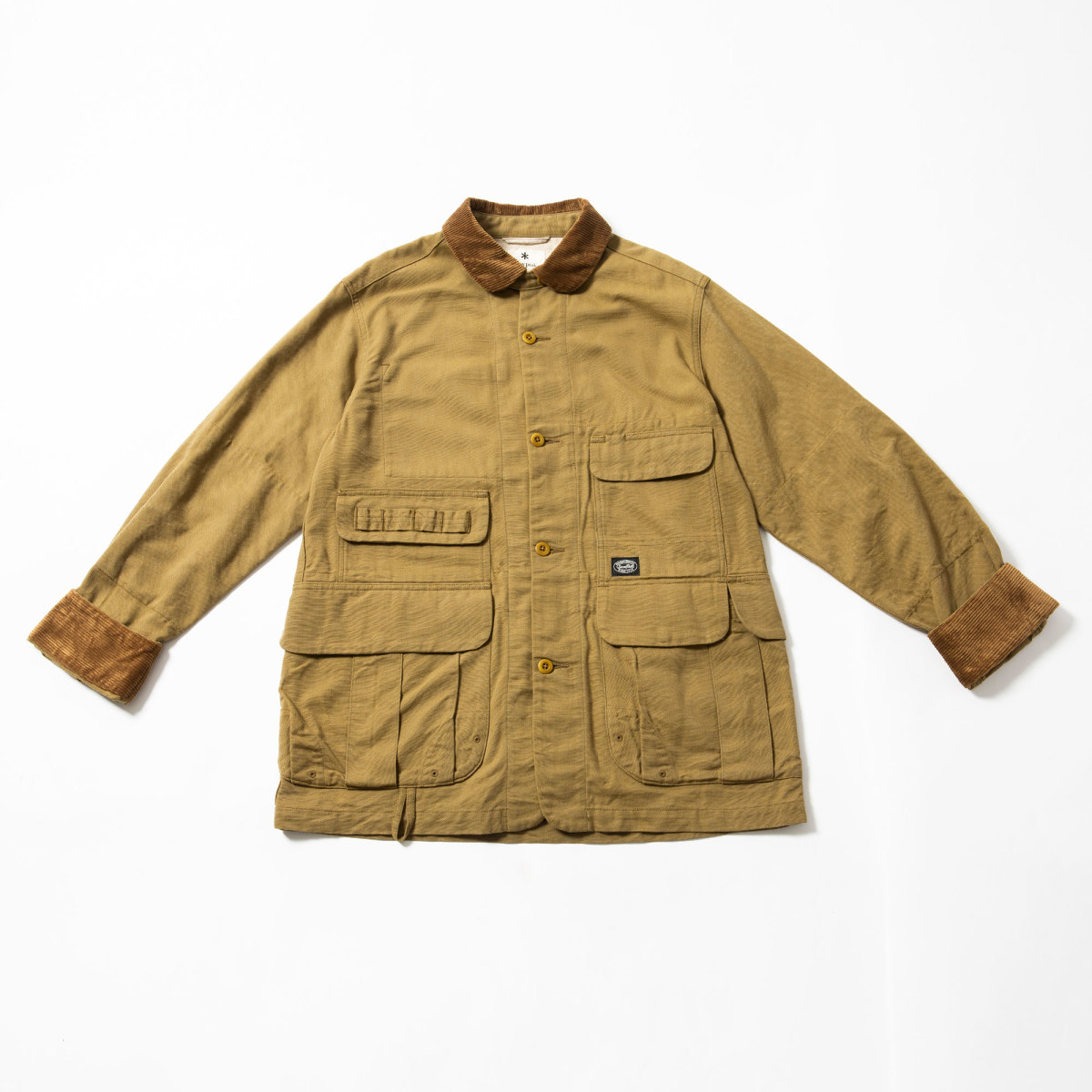
The Torch Bearer
Snow Peak is known for cutting-edge performance and refined design, but no piece in its line combines the two quite like the Takibi Duck Jacket. The silhouette is inspired by classic Japanese workwear and constructed with a (flame-resistant) modified-acrylic Kanecaron synthetic-cotton blend that qualifies it as proper outerwear. It’s guaranteed to be the most unique-looking jacket around any campfire.
[$610; snowpeak.com]
Get it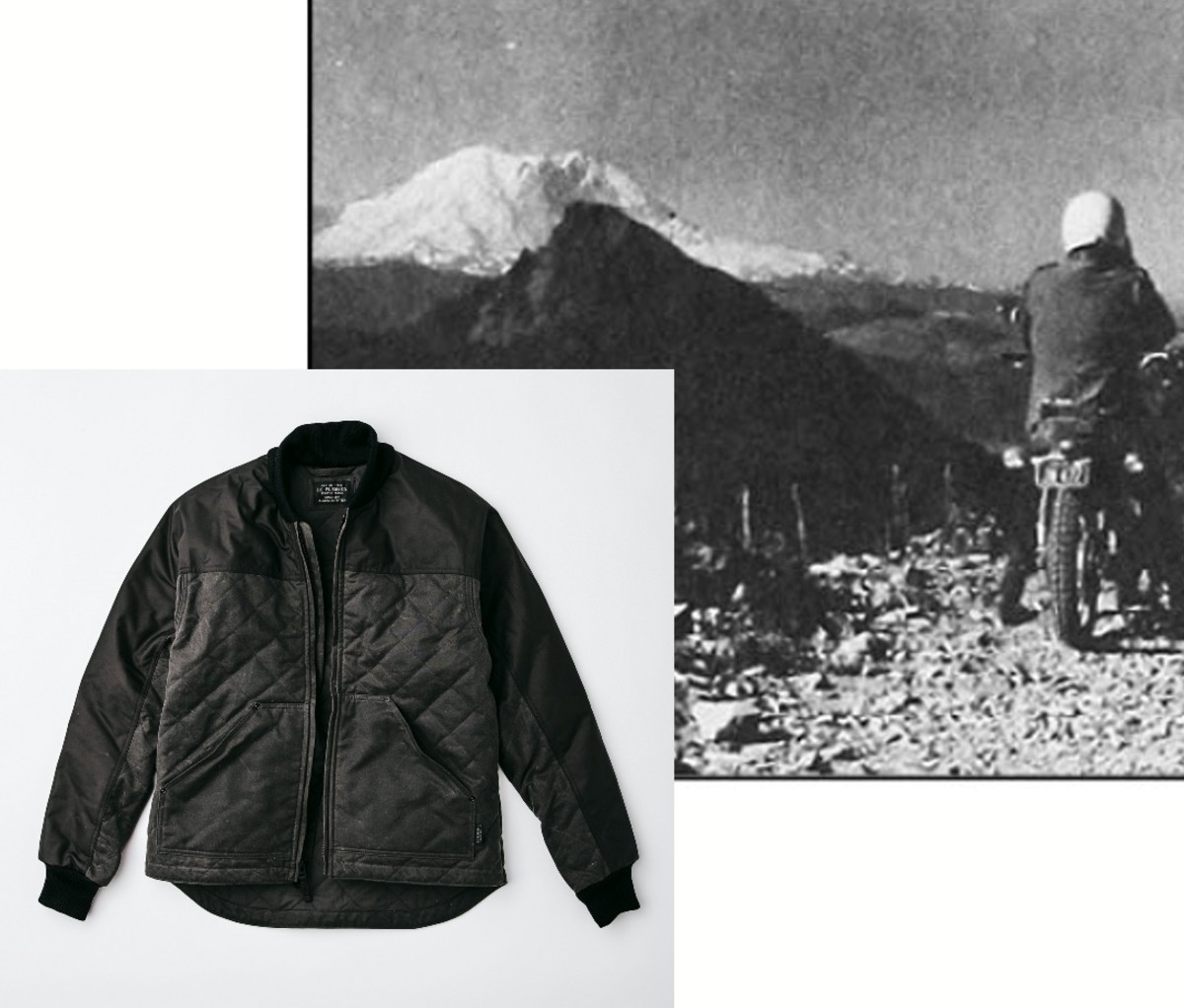
Ready for the Road
Made for moto touring and adventure riding, Filson’s drop-tail, fully insulated, waxed cotton canvas Alcan Quilted Jacket blends modern materials with throwback James Dean attitude. Its rash-resistant canvas is overlaid with ballistic Cordura nylon for durability. The rugged exterior is softened a bit by cotton moleskin pockets that warm hands and won’t scratch glasses, plus sleeves with rib-knit cuffs that keep the weather out when paired with gloves.
[$450; filson.com]
Get it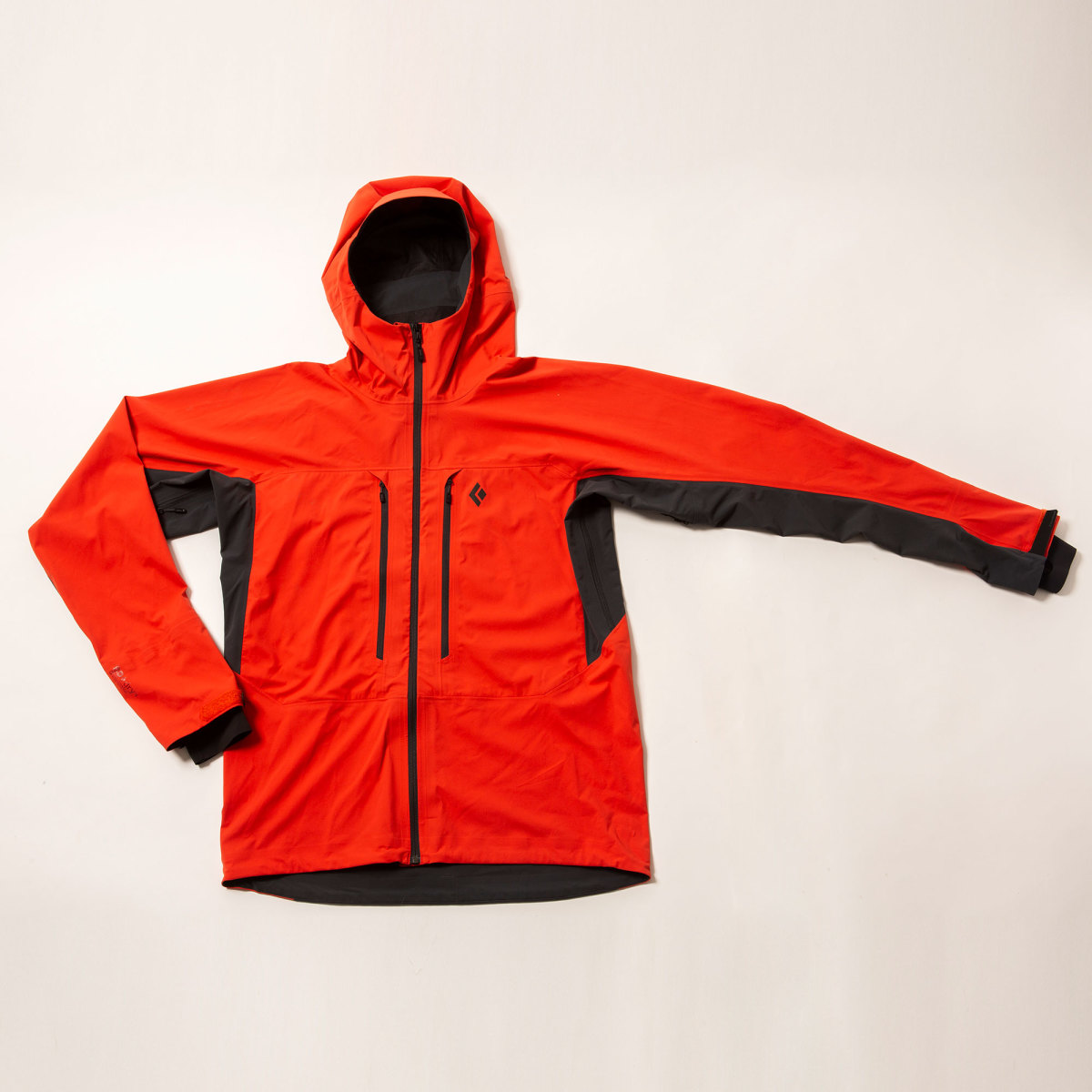
High and Dry
Balancing weather protection with moisture management is the holy grail of any backcountry kit. High-output uphill laps are in the Dawn Patrol Hybrid Shell’s DNA. A mesh panel inside the front double-zipper dumps sweat and excess heat without the jacket flapping. Stretch waterproof-breathable and soft-shell fabrics are welded without seams according to body zones that increase freedom of movement and targeted weatherproofing. Speaking of weather, the jacket features an effective, eco-minded durable water repellent that won’t ever wash out.
[$199; blackdiamondequipment.com]
Get it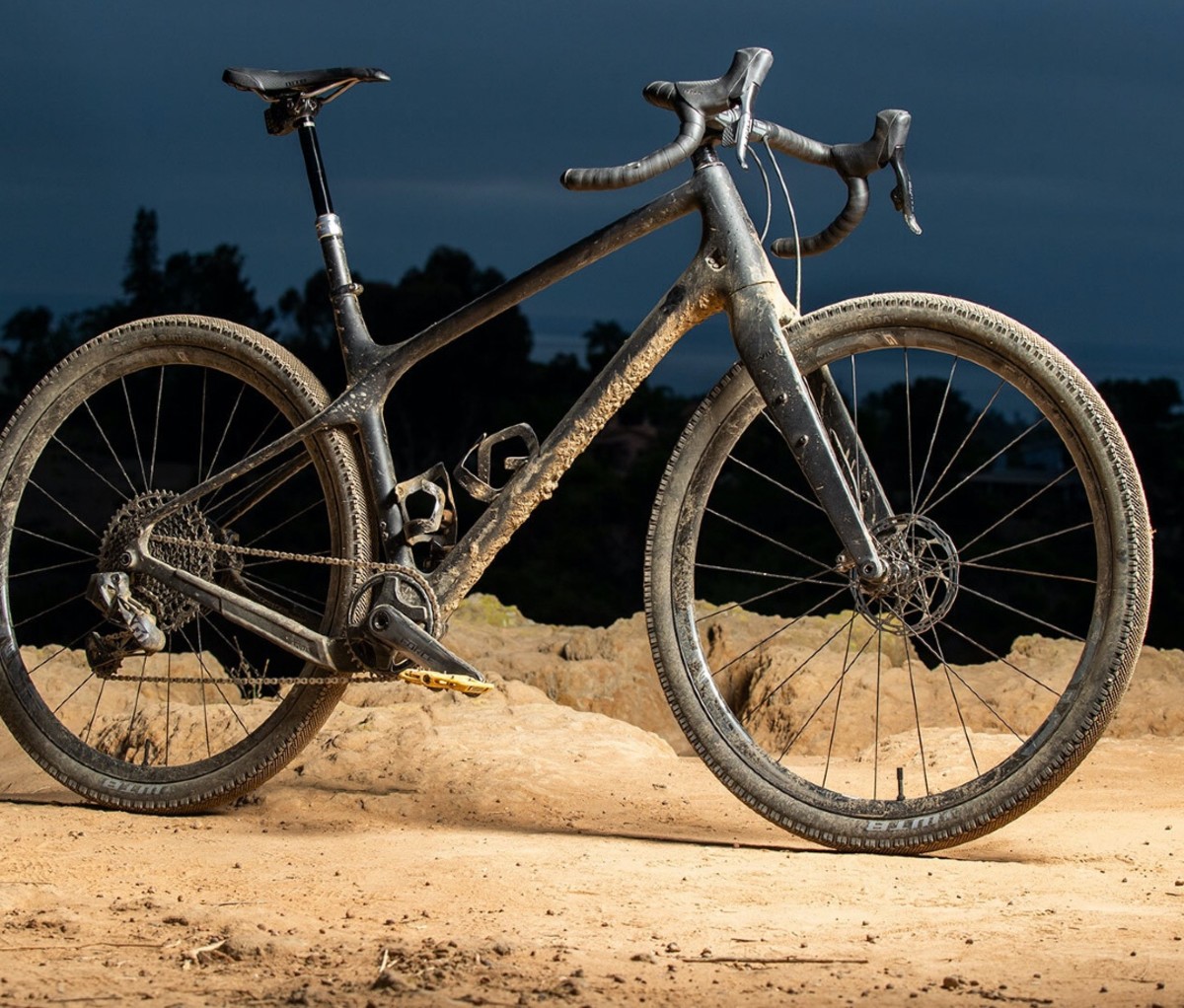
Gravel Goes Punk
Evil’s category-bending Chamois Hagar is a rigid gravel bike with soft curves that blend the geometry of mountain and road bikes to challenge preconceptions of how a drop-bar ride should look and perform. The mountain bike influences begin with a low-slung, sloping top tube, which, combined with a dropper post, lowers your center of mass and allows you to attack with more downhill handling confidence. Meanwhile, the beefed-up head tube and fork shine at high speeds, and plentiful cargo-mounting points please adventure riders. Finally, at the back end, compliant seat stays keep the ride smooth, while long, overbuilt chainstays keep the carbon frame stiff laterally for added pedal gains.

Combined, it adds up to “more party on singletrack.” This sleek matte-black injection of shred stability into the more subdued, often more roadie world of gravel was the brainchild of longtime innovators Kevin Walsh and Dave Weagle. And its unveiling was met with plenty of “armchair engineering” and online vitriol, says Evil Co-Owner Walsh. “Rules sometimes define a category,” Walsh explains. “In Italian food, to make manicotti, you’re expected to use specific ingredients in a particular form. Even if what you call manicotti tastes amazing, traditionalists will say it’s not manicotti. We’re doing manicotti with a twist. We’re using different ingredients, but we’re still making a gravel bike.”
[From $3,899; evil-bikes.com]
Get it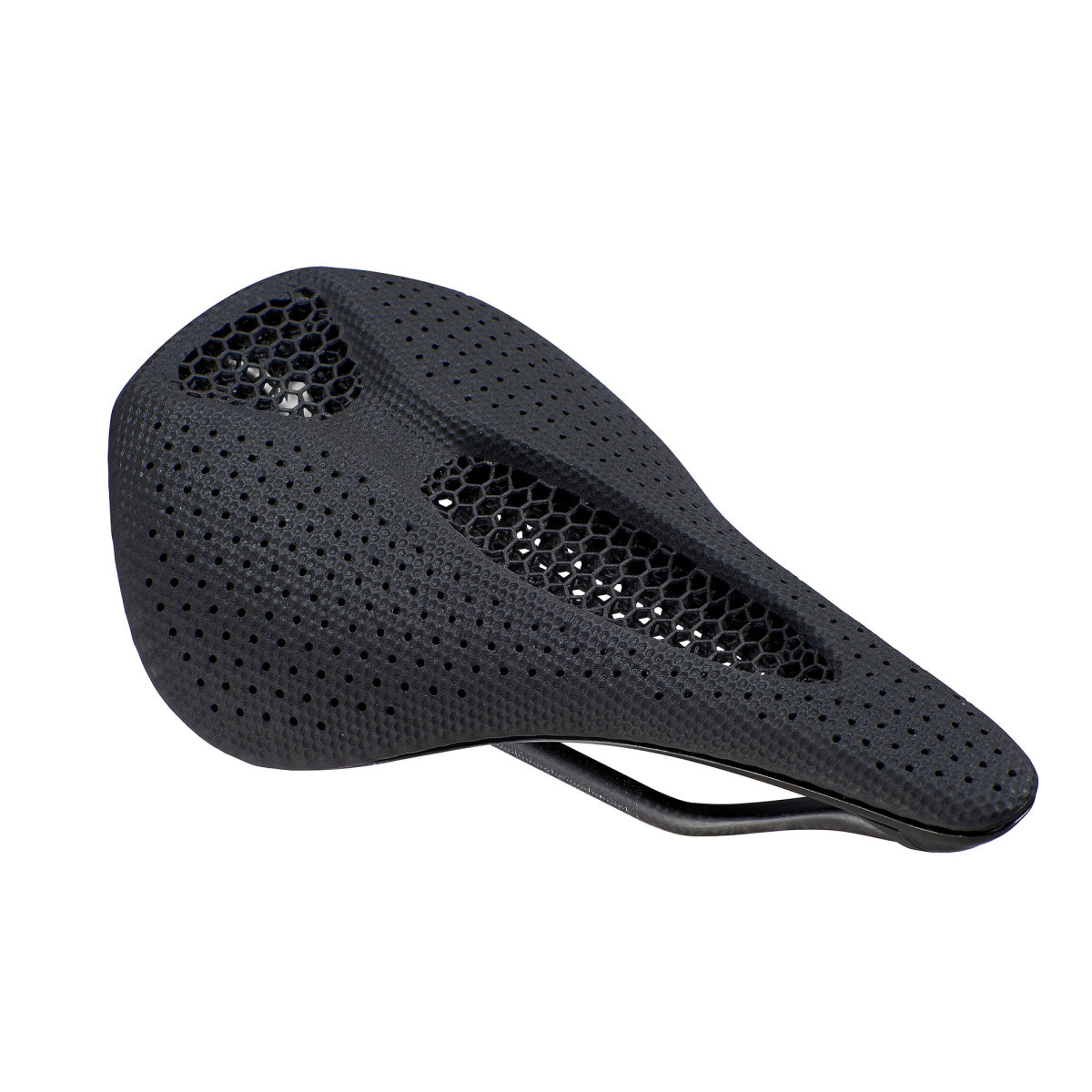
Fit to Sit
By 3-D printing with an advanced liquid polymer, Specialized created its new Power Saddle with Mirror, providing a complex, variable-density structure for weary sit bones. How complex? The lightweight honeycombed lattice of 14,000 struts and 7,799 nodes eerily dampens vibration, distributes weight, and reduces pressure (for better blood flow to your groin) in ways that no foam can match.
[$450; specialized.com]
Get it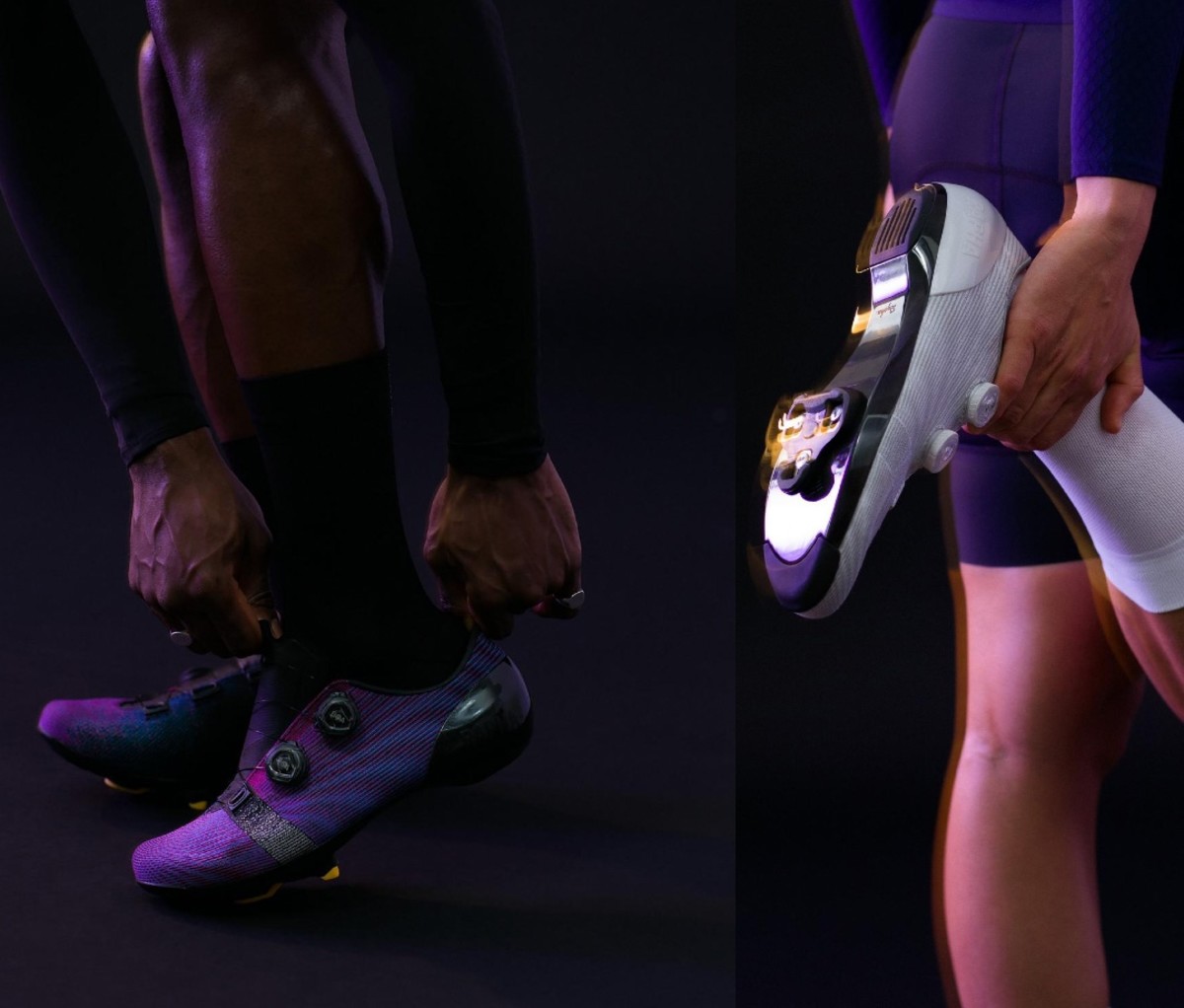
A Woven Wonder
Rapha’s eye-catching Pro Team Shoe employs a seamless piece of its proprietary Powerweave, created for a secure feel. Pairing the thermoregulating and hydrophobic fabric with a full-length carbon sole means consistent power transfer. The form-fitting knit material also means they transfer to high output straight out of the box, says EF Pro Cycling rider Lachlan Morton. “I’d normally never race in a new shoe,” Morton adds, “but for this I’d make an exception.”
[$355; rapha.cc]
Get it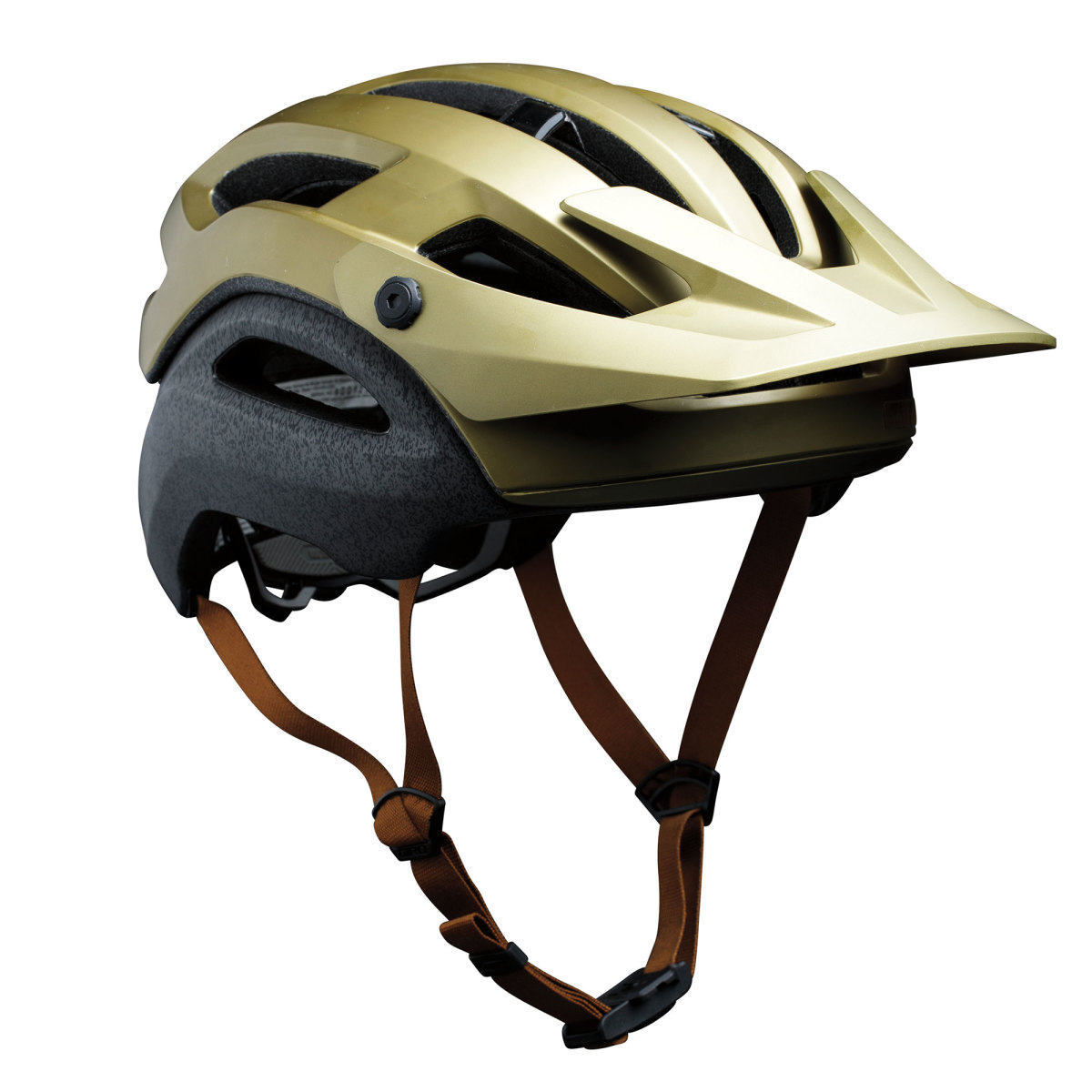
The Half-Shell Hero
With a novel ball-and-socket design, Giro’s Manifest Spherical is the ultimate defense against traumatic brain injuries. By utilizing multiple planes the helmet can, upon impact, slow the brain’s movement inside your skull. Hit your head, and the socket skullcap incrementally rotates on the ball of the inner helmet, slowing rotational forces, by utilizing a MIPS low-friction slip-plane. A polycarbonate spine overlays dual-density foam that’s not overly stuffy, as 19 vents keep you cool and protected.
[$260; giro.com]
Get it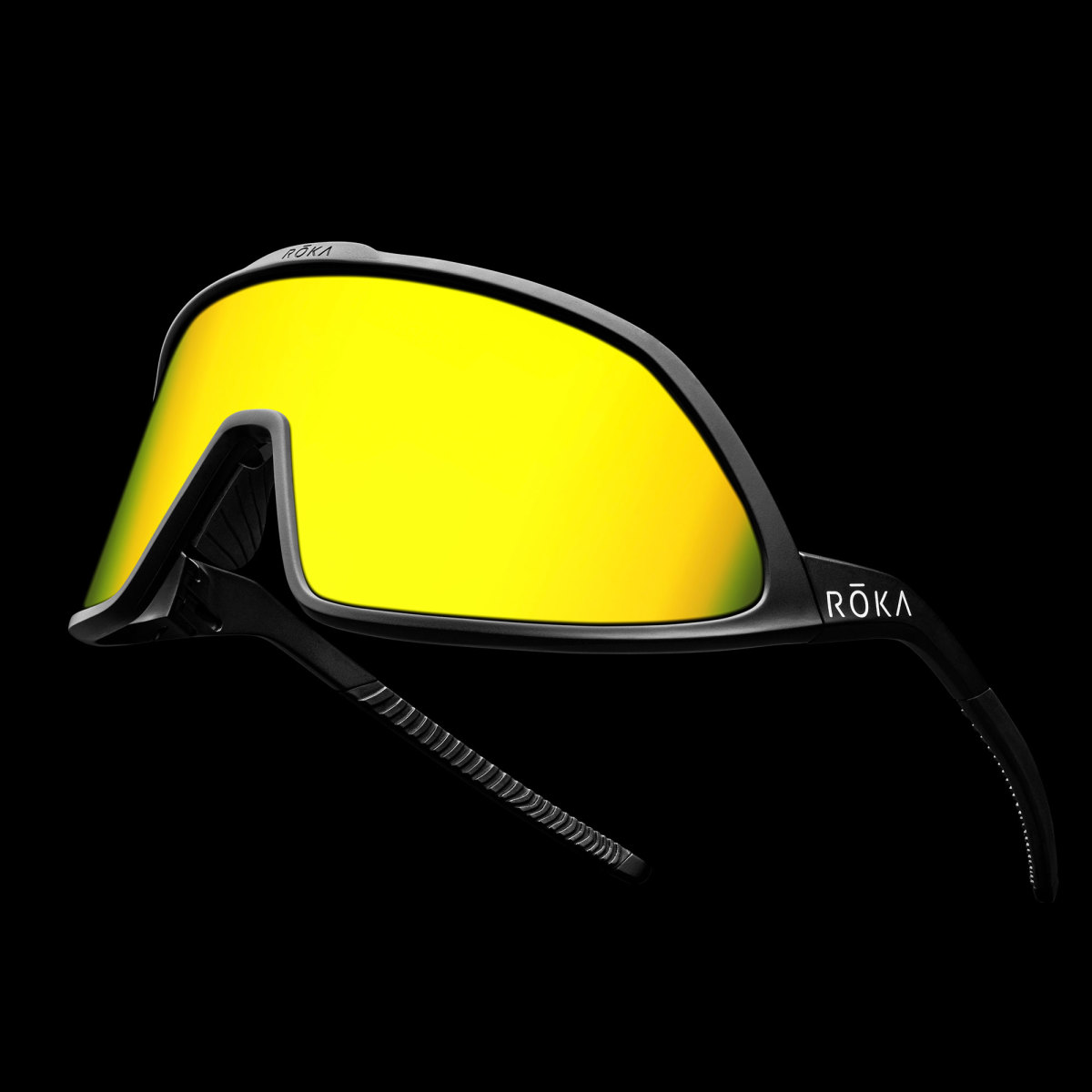
Flipped to Grip
The Roka Matador cycling sunglasses sport an inverted design that jibes well with a greater variety of caps and helmets. A seven-base cylindrical lens mitigates distortion, fog, and moisture buildup whether you’re aero on a tri bike or ricocheting off berms on a hardtail. Grippy nose pads and bendable titanium wires at the temples ensure a budge-free fit.
[$195; roka.com]
from Men's Journal https://ift.tt/32b6fZ8



0 comments